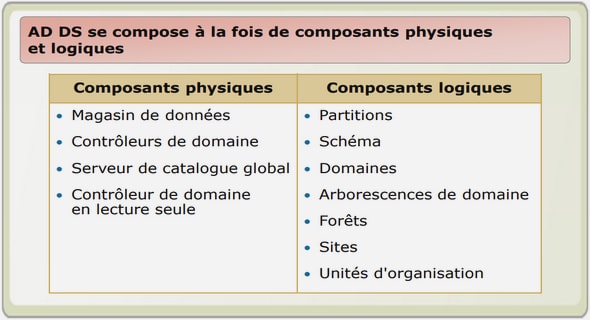Get Complete Project Material File(s) Now! »
Brand Naming Strategies
When discussing branding and brand names, it can be differentiated between a company name, a brand name and a product name. For example, Garnier Skin Naturals – Pure is a combination of a brand name Garnier and a product name Skin Naturals – Pure (Garnier, 2012). Furthermore, Garnier is a brand of the company L’Oreal, which does have several brands in their product portfolio (e.g. L’Oreal Paris, Maybelline New York) (L’Oreal, 2012).
Naming and introducing new brands and products to the market is a very strategic decision that considers different aspects such as a company’s brand portfolio, the overall marketing strategy and competition (Keller et al., 2011). A thorough discussion of brand extensions, line-extensions and brand-portfolio management will not be conducted in this paper.
However, the authors of this thesis want to give a brief overview of different brand naming strategies.
Categories
The first strategic branding decision is what kind of brand name should be developed for a product. There are four general strategies that are often applied: Individual names, blanket family names, separate family names for all products and a combination of a corporate name with individual product names (Kotler and Keller, 2009). Figure 1 shows the brand relationship continuum according to Kotler and Keller (2009).
What’s in a Name? A study on the success factors of brand naming in China Bart Berende & Fabian Kredig
Individual names have the major advantage that the company does not tie its reputation to the product. Consequently, if the product fails or appears to have low quality, the company’s name or image will not be hurt. This strategy is often applied by big FMCGcompanies like Procter & Gamble (e.g. Ariel). Blanket family names are used when a company uses its corporate brand for different product categories (e.g. Campbell’s or Heinz).
Separate family name combine strong corporate brands with a separate individual brand. This is often practiced when a company produces very different products and, therefore, one blanket family name is not desirable. Another possibility is a combination of a corporate name and an individual product name (e.g. Kellogg’s Rice Krispies, Kellogg’s Corn Flakes). The company name gives the product value and the individual name customizes the product (Kotler and Keller, 2009). Another example for a company that uses combination of a corporate name and an individual product name is Sony (e.g. Sony Walkman, Sony Vaio or Sony PlayStation).
Brand Extensions
The crucial role of brand names in branding is also illustrated by the commonly applied practice of stretching existing brand names into new product categories (i.e. brand extensions). Brand extension occurs when a firm uses an established brand to introduce a new product. It can be defined as using a successful brand name to launch a new or modified product in a new product category (Kapferer, 2008). Brands with a strong image and high awareness have an advantage on the market. Companies want to capitalize this by extending the brand name (Randall, 2000). Most companies follow this approach and introduce new products under their strongest brand names. In fact, most new products (80% to 90%) are extensions of existing brand names (Kotler and Keller, 2009). When marketers combine a new brand with an existing brand, the brand extension can also be called a subbrand. The existing brand that is used for the brand extension and the creation of the subbrand is called the parent brand. Often the parent brand has already multiple subbrands, and therefore, it can be called a family brand (Kotler and Keller, 2009). A good example is the Nivea brand that functions as a parent brand and brought several subbrands to the market, such as Nivea for Men or Nivea Sun.
There are basically two categories of brand extensions: line extensions and category extensions. In line extensions, the parent brand covers a new product within a product category it currently serves. A good example is the different types of yoghurts from the same company (i.e. fruit yoghurts, blended fruit, natural yoghurt). In a category extension, the parent brand is used to enter a different product category, for example, apple iPod’s (Kotler and Keller, 2009).
What’s in a Name? A study on the success factors of brand naming in China Bart Berende & Fabian Kredig This somewhat short excursion into different brand naming strategies and brand portfolio does not have the ambition to give the reader a thorough insight into strategic brand naming and brand portfolio management. It rather should underscore the fact that brand naming is also a very strategic matter that can be discussed from different angles.
1! Introduction
1.1! Background
1.2! Problem Discussion .
1.3! Purpose and Research Question
1.4! Structure
1.5! Delimitations
2! Theoretical Framework
2.1! Branding
2.2! Brand Naming in China .
3! Approach of the study
4! Methodology
4.1! Research Approach
4.2! Research Strategy .
4.3! Research Analysis
4.4! Ethical Implications
4.5! Criticisms of Chosen Method
4.6! Accuracy
4.7! Generalizability
5! Empirical Findings
5.1! Marketing
5.2! Sociocultural
5.3! Linguistics
5.4! Legal
6! Analysis
6.1! Marketing
6.2! Sociocultural
6.3! Linguistic
6.4! Legal
6.5! Holistic view
7! Conclusion
8! Discussion
8.1! Limitations
8.2! Further research
List of reference
Appendices
GET THE COMPLETE PROJECT
What’s in a Name? A study on the success factors of brand naming in China

